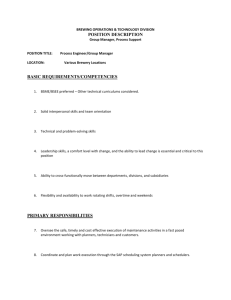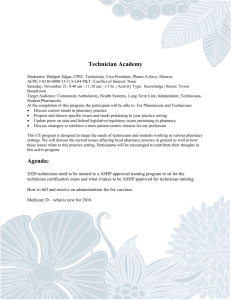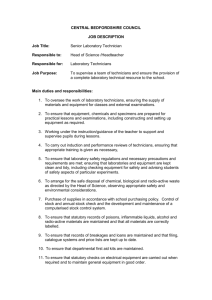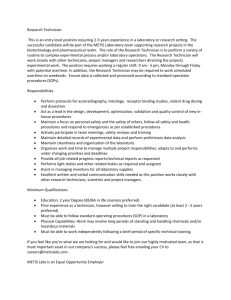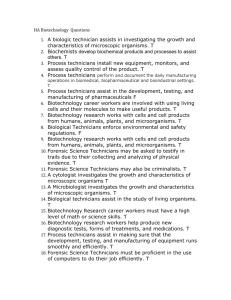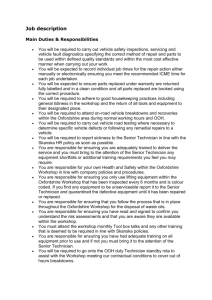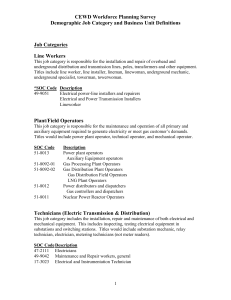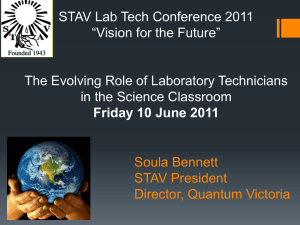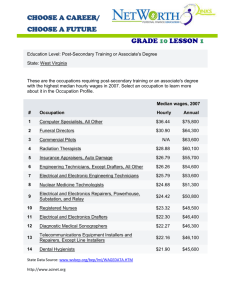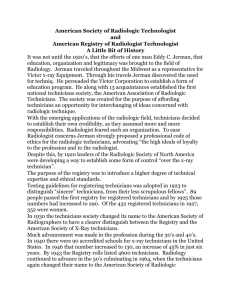Special Effects Technician
advertisement
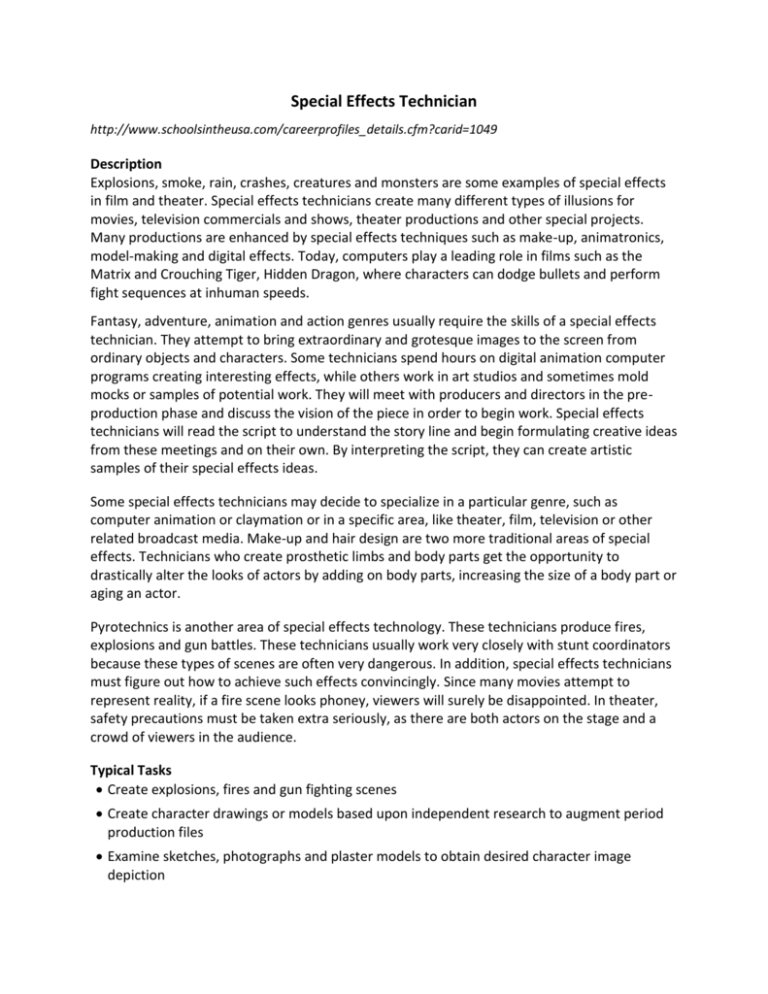
Special Effects Technician http://www.schoolsintheusa.com/careerprofiles_details.cfm?carid=1049 Description Explosions, smoke, rain, crashes, creatures and monsters are some examples of special effects in film and theater. Special effects technicians create many different types of illusions for movies, television commercials and shows, theater productions and other special projects. Many productions are enhanced by special effects techniques such as make-up, animatronics, model-making and digital effects. Today, computers play a leading role in films such as the Matrix and Crouching Tiger, Hidden Dragon, where characters can dodge bullets and perform fight sequences at inhuman speeds. Fantasy, adventure, animation and action genres usually require the skills of a special effects technician. They attempt to bring extraordinary and grotesque images to the screen from ordinary objects and characters. Some technicians spend hours on digital animation computer programs creating interesting effects, while others work in art studios and sometimes mold mocks or samples of potential work. They will meet with producers and directors in the preproduction phase and discuss the vision of the piece in order to begin work. Special effects technicians will read the script to understand the story line and begin formulating creative ideas from these meetings and on their own. By interpreting the script, they can create artistic samples of their special effects ideas. Some special effects technicians may decide to specialize in a particular genre, such as computer animation or claymation or in a specific area, like theater, film, television or other related broadcast media. Make-up and hair design are two more traditional areas of special effects. Technicians who create prosthetic limbs and body parts get the opportunity to drastically alter the looks of actors by adding on body parts, increasing the size of a body part or aging an actor. Pyrotechnics is another area of special effects technology. These technicians produce fires, explosions and gun battles. These technicians usually work very closely with stunt coordinators because these types of scenes are often very dangerous. In addition, special effects technicians must figure out how to achieve such effects convincingly. Since many movies attempt to represent reality, if a fire scene looks phoney, viewers will surely be disappointed. In theater, safety precautions must be taken extra seriously, as there are both actors on the stage and a crowd of viewers in the audience. Typical Tasks Create explosions, fires and gun fighting scenes Create character drawings or models based upon independent research to augment period production files Examine sketches, photographs and plaster models to obtain desired character image depiction Create graphic images and creatures on computer programs Confer with stage or motion picture officials and performers to determine dress or makeup alterations Study production information such as character, period settings, and situations to determine makeup requirements Design rubber or plastic prostheses and requisition materials such as wigs, beards, and special cosmetics Create the illusion of a distorted or alien body (often with the assistance of threedimensional prosthetics) by attaching prostheses to a performer Induce rain for rainy scenes Enhance speed and other natural images from original filming in post-production stage A typical day for a special effects technician will vary. On film sets, the hours can be unbelievably long and tiring, yet when working in studios, the hours will usually be fairly regular. There is a combination of indoor and outdoor work, depending on the location of the filming.
